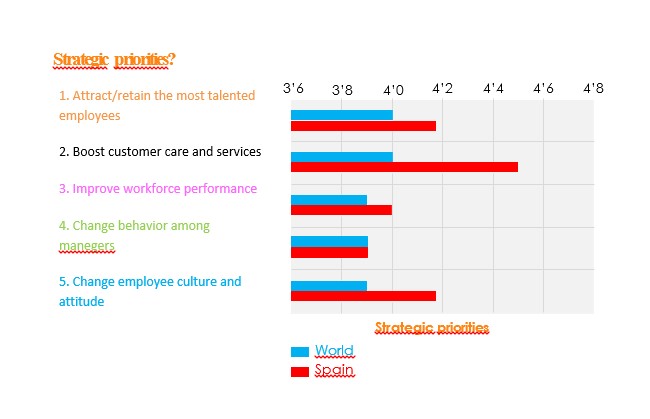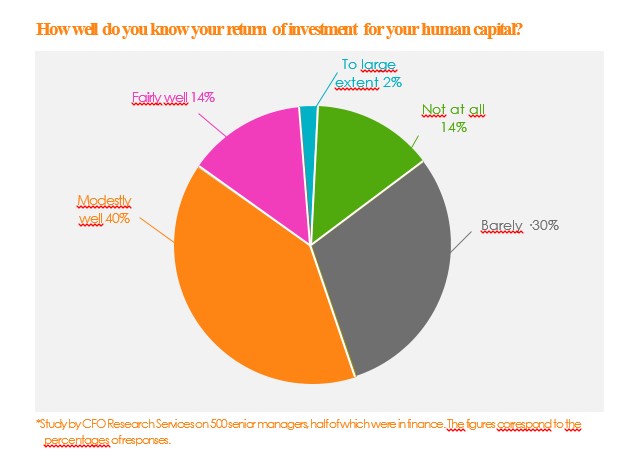The experiences with the implementations of the Human Capital Development Model have enabled us to identify the areas of investment in human capital that deliver the greatest economic return.

Are these names familiar to you: Schultz, Becker, Heckman, Kahneman, Smith, etc.? I’m sure they are. All of them are known to be distinguished economists and receptors of the Nobel Prize in Economics. I’m sure you knew that they were famous for being worthy of such a prestigious award, but do you know what their core theories are partly based on? Each of them, alongside many other players in the world of economics, maintains that human capital is the key element for financial success in companies. Their works defend the importance of human assets, above all other assets, for economic and social development and progress.
Theodore W. Schultz was the first to use the term, human capital, in an article he published in the American Economic Review titled, Investment in Human Capital, and he was one of the pioneers to point out the need to think of the individual as capital (a source of wealth creation), rather than as a resource (something that is interchangeable and that has the same value in any place or situation).
Similarly, Gary Becker has stated that the 21st century, far from seeing a decline in the importance of human capital, will see its expansion. He has often reiterated the need for organizations to implement specific accounting practices to measure their investments in human capital. From his side, James J. Heckman, while enjoying the success the award brought him, assured that the true advantage for a company lies in the preparation of its people. He posed a question: if one could take products and make them cheaper, if natural resources could be bought at affordable prices and all around the world, if we could borrow capital, and technology could be copied, what would be left? His answer: people who are ready.
The same prize was also awarded to Daniel Kahneman and Vernon L. Smith for their work on how psychology influences people’s behaviour and how this affects the economy. We could give many more examples, but we think that as a sample these are enough.
The force of reasoning
If the famous pundits we cited deserve respect and credibility, why don’t we follow their instructions? Why don’t we pay a little more attention to them and start measuring this capital, even if it’s hard? Be surprised: 94% of managers think that managing intangible assets is one of the company’s most important functions today. However, 95% of companies claim not to have a suitable and reliable system for measuring how intangible assets and consequently, only 5% have a reliable procedure for measuring them. This is one of the main conclusions drawn from the various studies carried out by the most prestigious research centres specialising in human performance.
The current accounting system is not watertight and it’s incapable of reflecting the company’s real value. Given this, we should then be asking ourselves questions such as: Why does the business world continue to be guided solely by a quantitative approach? Why aren’t there more business initiatives that seek to quantify the value of this intangible asset? Why isn’t it recognised that what matters most should not be at the mercy of what matters least?
Remember that as early as 1776, the year of the American Revolution, Adam Smith by publishing his great work, The Wealth of Nations, demolished some of the prevailing views of mercantilism and physiocrats, and warned us that, “A nation is not made wealthy by the childish accumulation of shiny metals, but it enriched by the economic prosperity of its people.” In the face of this paradox, while setting political connotations aside, what comes to mind is a statement that Miguel de Unamuno once made at the University of Salamanca shortly after the end of the Spanish Civil War and that aptly serves to bring across our point, “You will win, but you will not convince.” As in, you win because of force, but the force of reasoning is not convincing, so to win in a competitive environment like today’s, we only do it through the power of reasoning, by measuring intangibles and people.
Strategic priorities for companies
Various research studies the strategic priorities of companies have been identified, coming to the conclusion that four of the five strategic priorities are tied to people management.
As we can see in the graph below, only the aspects to do with improving customer experience outdo the other four strategic people management priorities, especially for Spain. It is worth noting that apparently Spaniards are much more concerned about such issues than managers in the rest of the countries worldwide.

Another significant aspect of the research shows that the importance of the HR function is ranked in third place for companies, behind the sales function and the customer service function. Some 40% of those interviewed were presidents, CEOs or general managers and 60% were HR directors. In fact, this reveals that the C-suite level of management deems the people management function to be even more important than those in charge of HR itself.
Human capital and business performance
Unfortunately, most companies don’t know the return on their human capital investments. Managers publicly and consistently uphold the importance of their employees for business success, but few organizations have a systematic method for measuring their total investment in human capital assets, the returns they earn, and identifying which areas or initiatives contribute most to that success.
Although companies—depending on the sector and activity—tend to invest between 30% to 70% of their earnings in human capital, the majority of managers, as shown in the graph below, don’t understand or know the return on their human capital investments. Moreover, most managers think they don’t have a way to prove, other than intuitively, that better human capital management improves business outcomes. This also means that managers don’t prioritize these investments by their contribution to value generation.
More frustratingly, few HR professionals as yet possess the mechanisms or the knowledge to see how people management actions and programs affect performance. Using the Human Capital Development Model, a company can accurately assess its human capital capabilities, identify associated processes, and establish process adjustments to increase capabilities, and ultimately boost overall business performance.
The model combines the inputs from the best market practices, from my company’s (2.C Consulting) own experience in the human performance area and the information obtained through applying state-of-the-art measurement techniques. The model’s great value comes from considering so much more, other than spend levels for assessing the effectiveness of human capital development initiatives.
The Human Capital Development Model
This is an analytical planning and measurement tool that allows an organization to identify and measure the human capital factors that affect organizational performance.
The results of these measurements can be used in at least three different ways. It can be used as a diagnosis that highlights the areas for improving performance can and/or creating value in order to justify or prioritize investments. It can be used as part of a comparative analysis of the evolution over time or even between different business units in the same organization. Lastly, it can be used as part of a large-scale organizational transformation process, in which the aim is to redesign traditional HR functions, so these adapt to the new business strategy.

The model allows for this teleological versatility because unlike other diagnostics focusing exclusively on HR practices, it correlates these practices with the company’s overall performance and value creation process, and not just with cost control.
Conclusion
The Human Capital Development Model makes it possible to quantify the state of -HR processes and capacities and compare investments in the weakest human capital processes and capacities, investments with the greatest impact on results or investments that most influence the areas bringing competitive edge to the organization.
Thereby we have been able to turn hunches into facts:
- Organizations putting people first are ahead of the others when it comes to achieving results. To measure the management of your human capital, the first step is to make the decision to do so.
- To measure it, you must choose the model that allows you to distinguish between cause and effect (causality), going beyond the simple correlation between HR processes and capabilities with key performance indicators and business results.
- There are processes that impact certain business capabilities more than others.
- Likewise, there are certain capacities that influence various business drivers more than others. Not all of these business drivers have the same impact on the company’s revenue growth, ROI, profitability or future value.
- If you have decided to measure this, do not expect to do it only once every two or three years; you should do this with a frequency that’s similar to the one used for your financial capital.
And don’t forget that the right investment in human capital improves business results… and it is already measurable.






